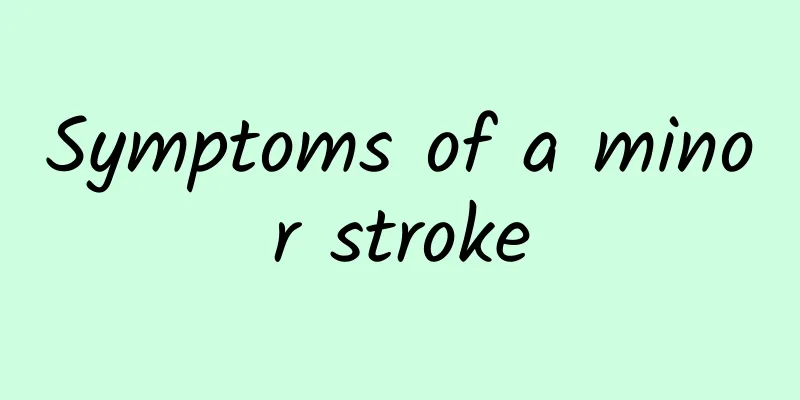What causes abdominal pain?

|
In busy lives, many friends do not pay much attention to their bodies because of their busy work, and some minor body pains may be ignored. Abdominal pain is a disease that is often overlooked by us. The degree of abdominal pain is divided according to the severity of the disease. There are dull pain type and obvious cramping type. These pains should not be ignored by us, so what causes abdominal pain? Lower abdominal pain is a very common symptom. Usually, female friends regard abdominal pain as a precursor to menstruation, but abdominal pain does not only occur during menstruation. Clinically, abdominal pain is related to 10 diseases. So, ladies, be careful! What causes abdominal pain? 1. Ovulation abdominal pain Adolescent women may experience mild abdominal pain during ovulation, but this is physiological and is often manifested as unilateral lower abdominal pain, dull pain, or heaviness-like pain. The pain usually lasts only one to two days and disappears without treatment. 2. Dysmenorrhea This is the most common abdominal pain, which is divided into primary and secondary types. The cause of primary dysmenorrhea is related to the level of prostaglandins in the body, cold, and emotional and psychological factors, and it can usually heal itself after marriage. The common causes of secondary pain are endometriosis and adenomyosis. The symptoms include gradually increasing pain, often in a cyclical manner, or dull pain in the lower abdomen during non-menstrual periods that worsens before and after menstruation. In addition, it is often accompanied by infertility and menstrual disorders, which often require drug treatment. 3. Ovarian Corpus Luteum Rupture This is caused by excessive bleeding in the corpus luteum, accompanied by sudden onset of abdominal pain in the lower abdomen or one side, and in severe cases, shock may occur. This type of abdominal pain usually occurs around the 20th day of the menstrual cycle, with lower abdominal pain that varies in severity. 4. Ovarian cyst pedicle torsion or rupture This is because the cyst has a long pedicle, a large volume, no adhesions to the surrounding area, and is highly mobile, and twists when affected by intestinal peristalsis or changes in body position. When the pedicle of an ovarian tumor is twisted, pain suddenly occurs on one side of the lower abdomen, which is persistent colic, often accompanied by nausea and vomiting; there may be obvious tenderness and muscle tension in the abdomen; digital rectal examination may reveal swollen and tender appendages. 5. Pregnancy-related diseases Abdominal pain caused by pregnancy-related diseases can be seen in threatened abortion, ectopic pregnancy, etc. Taking ectopic pregnancy as an example, dull pain or distension in the adnexal area on the affected side may occur. The pain symptoms vary depending on the amount and speed of bleeding. 6. Acute appendicitis Acute appendicitis is a surgical disease, but it needs to be differentiated from gynecological diseases. About 70% to 80% of patients initially feel pain in the upper abdomen or around the navel, which then moves to the right lower abdomen a few hours later. The pain of simple appendicitis is limited to the right lower abdomen and may be continuous or paroxysmal. The disease generally requires surgical resection. 7. Psychogenic abdominal pain For example, a girl with school phobia is afraid to go to school and take exams. If the patient is forced to go to school, she will experience anxiety and anxiety-related physical discomfort, such as pale complexion, rapid heart rate, rapid breathing, unbearable abdominal pain, vomiting, headache and dizziness. Some patients have visited the doctor for severe abdominal pain many times, but the results of various examinations were normal. Once the patient is allowed to temporarily take a leave of absence from school, the anxiety and discomfort symptoms will soon be relieved and the abdominal pain will disappear immediately. 8. Gynecological inflammation It is more common in adnexitis and pelvic inflammatory disease, and often occurs in women of childbearing age. The pain is on one or both sides, accompanied by increased vaginal discharge. Chronic cases often present with dull pain, back pain or a feeling of heaviness; acute cases often present with abdominal pain that is resistant to pressure and is accompanied by fever. |
<<: What to do if your child has herpes in the throat
>>: What to do if your wrist hurts when holding a child
Recommend
What are the types of nephritic syndrome? How to treat it?
As the pressure of life continues to increase, ma...
Treatment of white matter demyelination: Family care is the most important
Just like a fever, it is just a reaction of the b...
Cishi Red Barley
Although water chestnut looks inconspicuous and i...
What is varicocele
Varicose veins are a relatively common male disea...
What medicine to take for severe cold
In life, many people are prone to catching colds,...
Can scraping be used to treat wind-heat cold?
People will encounter some diseases in their dail...
Back pain causes, common causes
Many people suffer from back pain in life. In fac...
What is the difference between uterine contractions and diarrhea pain?
Many women are very sensitive in the later stages...
Can I get a tattoo on my heart surgery scar?
Heart surgery is a relatively common surgical tre...
How to quickly remove acne marks
People in adolescence are very prone to acne. Acn...
The efficacy and price of Cordyceps
Cordyceps is beneficial to the kidney, nourishing...
The efficacy, effects and taboos of stir-fried radish seeds
Radish seed is a common Chinese herbal medicine. ...
What should children eat if they are weak?
When a child is weak, parents must take good care...
Hepatitis B surface antibody positive
When it comes to liver disease, many friends will...
The efficacy of brown sugar ginger water
Many people prefer to drink brown sugar ginger wa...









